The Muse S is a headband and iPhone app combo that can teach you to meditate using real-time biofeedback.
Meditation, the practice of continually reeling yourself into the present moment, is one area where Eastern philosophy and Western medicine can agree. Studies show that mindfulness meditation can reduce a long list of ailments, including depression, chronic pain, anxiety, and high blood pressure.
Even if you aren't plagued by any of those conditions, meditation can help ground you. It can give you peace and a sense of internal balance.
Only in the last decade has technology had any role to play in meditation. Interaxon, the Canadian company that made the first meditation headband for consumers in 2014, now has a more advanced — and more comfortable — model called Muse S.
What is Muse S?
Muse uses an electroencephalogram (EEG) and other sensors to give you real-time meditation feedback. Unlike a human coach, it can see what your brain is doing and tell you about it as it's happening. You wear headphones — AirPods and AirPods Pro are ideal — and listen to real-time audio cues that tell you what your brain is up to.
The product also includes guided meditations and soundscapes, attempting to be a one-stop-shop for all your meditation needs.
The Muse S is the company's top-of-the-line model. It's also by far the most comfortable. It takes all the sensors from the hard-plastic Muse 2, adds some sleep features, and crams it all into a cushy-soft fabric band.
Brain-sensing feedback is still the product's marquee feature:
- If it senses more active and stressed brain activity, the soundscape will respond with more turbulent "weather" like gusting winds, thunder, or roaring waves.
- If it senses calm, the audio environment will quiet down. You will only hear tranquil sounds like delicately rustling leaves and chirping birds.
Your brain will likely shift between calm, active, and in-between states countless times during a session. The real-time audio tells you exactly when those shifts happen, giving you the chance to figure out what "works" and what doesn't.
Headband design
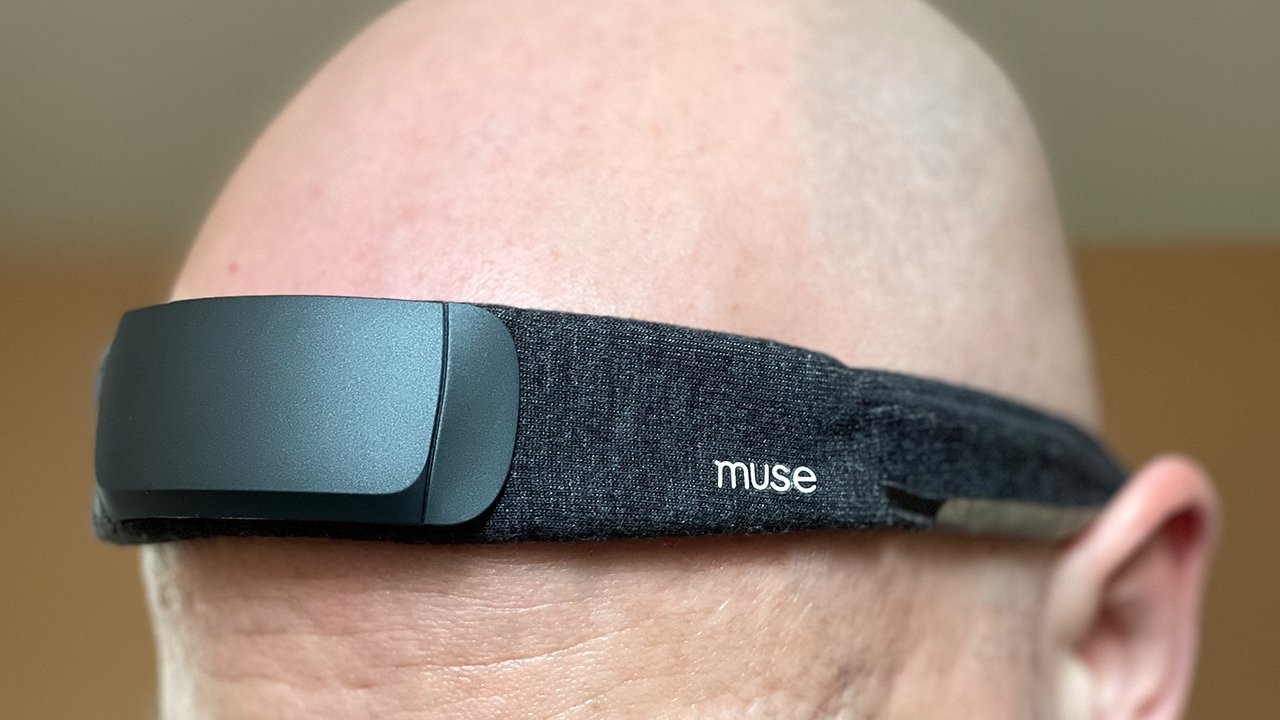 The pod — sitting in the forehead area — is a removable section that includes the battery and other tech
The pod — sitting in the forehead area — is a removable section that includes the battery and other techWhether you're meditating or sleeping, the headband is incredibly light and comfortable to wear. You don't have to adjust any straps, as you wrap the band around your forehead and pull down on the back until it's tight.
I haven't had any problems keeping the sensors in contact with my bald head. Our other testers — who have full heads of hair — also had flawless experiences.
The headband includes a removable pod that houses its battery and other tech. When the band has gathered enough head gunk to warrant a washing, you can easily pull out the pod and throw the remaining headband into the laundry.
We washed our review unit's band in the delicate cycle — sun-drying it afterward — without any issues.
The headband charges via the pod's micro USB port. We would have preferred to see USB-C on a modern and expensive tech product like this.
What Muse S can do for you
Before reviewing Muse S, I had already spent time with both the original Muse and Muse 2. Their feedback has helped me discern better what calm feels like — and what I can do to get there.
If you're going to invest in this $350 wireless accessory, you need to show up with an experimental, resilient, and curious mind. When you start, there's a good chance you'll only hear turbulent sounds, indicating an overly active mind.
At that point, it's all too easy to throw your hands in the air and decide that meditation is too hard or that this stupid headband doesn't know anything.
You'll need a willingness to make connections between your mindset and the feedback you hear. You'll also need courage and humility to let go of old habits and open yourself to what mindfulness means.
At first, that may take you to some unfamiliar and uncomfortable places. If you stick with it, it can also open new parts of yourself.
Meditation isn't about marching on a straight line towards "master level," where you're then 100% calm all the time. Instead, think of it as a continual process of bringing your focus back to your breathing. Going off-track is guaranteed; what's important is that you reset and refocus.
Meditation simplifies your focus, opening you to a state of mind that feels bigger than your habitual thoughts and worries.
Some may turn their noses up at the concept of a tech product gamifying meditation. After all, we're talking about an ancient — even sacred for some — practice.
Introducing quantifiable data into that equation is a new and strange concept.
However, we find brainwave feedback to be one of the best possible ways to begin or expand a meditation practice. Hearing your mind's activity levels in real-time can not only tell you that you need to let go; it can also reassure you that a few anxious thoughts here and there aren't anything to freak out over.
There have been plenty of times when my mind wandered to some stressful topic, but as long as I didn't ruminate on it, it didn't register much on the EEG. Ruminating, however, is guaranteed to bring on some turbulent sounds.
We humans can't always self-evaluate as well as we think. Muse can be the outside observer that sees into our minds and gives us unbiased feedback.
Even the world's most experienced meditation coach can't quite do that.
Muse app and subscription
The companion iOS app is where you control your session. It allows you to customize its time, mode, and audio profile.
Its optional voice-guided meditations are comparable to what you'd find on rival platforms like Calm or Headspace. Some guided meditations are free with your purchase, but a subscription at $12.99/month or $94.99/year adds over 500 more. The service adds new recordings weekly.
We didn't like that when you first set up the device, the app makes you listen to different introductory recordings before each session. You have the option to skip them, but you'll still need to manually hit "skip" every time you use the device until you've listened to enough of them to toggle them off permanently.
Introductory lessons serve a purpose, but these go way beyond "Here's what the product is, here's how you use it, and here are some meditation basics." It assumes you haven't meditated before and pulls you into a series of voice recordings prefacing each session.
We can't help but think the company is training you to associate the product with guided meditations — therefore making you more likely to buy a subscription.
While the guided recordings will be worth the extra cost if that's what you're looking for, those who only want to use Muse's feedback are still forced to go through this exercise in tedium. Listening to more than one introductory recording for each section of the app is too much. Making you listen to 10 of them is bad design.
You also can't background the app or put your iPhone to sleep while in a meditation session. Since iOS is perfectly capable of doing that, we wonder if this decision also came back to selling subscriptions.
If the device worked alongside other apps, you might be less inclined to pony up for a Muse subscription.
Other sensors and modes
The other Muse S modes — breathing, heart-rate, stillness, and sleep — aren't quite as compelling as brain-sensing. We see these as more like bonuses than killer features to rival its brain-sensing:
- Breathing mode asks you to sync your breath with audio cues that encourage slower and deeper breathing. This mode uses a photoplethysmography (PPG) sensor while providing background feedback that tells you how well you're aligning your breath with the guide.
- Another mode monitors your heart rate while meditating. The sound of a drumbeat alerts you in real-time to your heart's rhythm.
- Body meditation helps you practice stillness. It uses the headband's accelerometer to guides you — again using audio cues — into a balanced and relaxed physical posture.
These extra modes add to the product's breadth. However, since these metrics are easier to self-monitor than your thoughts, they take on a secondary importance.
Keep in mind that since the audio feedback only communicates one type of data at a time, you can't layer modes. You have to pick one for each session and can't, for example, do a session that monitors your mind and heartbeat.
Sleep mode
Much of Muse S's marketing centers around its sleep meditations and tracking. These programs include some subtle real-time feedback, but that's not as big a part of this type of session.
Sleep mode is more about listening to guided recordings as you prepare to drift off. It then tracks some basic sleep data through the night.
Once you drift off, it tracks the following:
- Sleep position
- Heart rate
- Stillness
- "Deep sleep intensity"
- Sleep stages
This data doesn't add much that other sleep-tracking products — including the Apple Watch, Beddit, and Oura Ring — also offer.
If you sleep alone, you'll want to pair your phone with a bedside Bluetooth speaker before starting the nighttime routine. Otherwise, you're left wearing AirPods or other earphones — not the most comfortable way to sleep.
If you already use one or more sleep trackers, then this mode won't likely be the reason you buy Muse S. You can replicate or improve on its sleep features with many competing products and services.
Is Muse S worth it?
Meditation is a personal practice, and your needs may be different from others' needs.
While brain-sensing is still the star of the show, Muse S expands the product from a one-trick pony into a full-fledged platform. We were most impressed with the EEG and soft form factor, but many people will appreciate having different feedback modes and a suite of guided meditations all in one place.
At $350 — though sometimes on sale for $300 — Muse S is pricey. It's only going to be worth it if you're ready to commit to daily meditation practice and learn from its feedback.
That includes making it through those frustrating first steps where you realize you aren't very good at this.
However, as long as you use it consistently and with a mind towards changing habits, Muse S can help you start a meditation practice — or take your existing one to the next level. It can unlock more balance, mindfulness, and calm. If that's what you're after, it's worth every penny of its considerable price tag.
Pros
- EEG brainwave feedback is highly instructive
- Soft and comfortable headband
- Breath, Body, and Heart modes add nuance
- Washable
- Battery life is long enough for numerous sessions
- Extensive suite of optional guided meditations
- Subscription isn't required for the product's core features
Cons
- Fairly expensive
- Charges via Micro-USB instead of USB-C
- Forces you to listen to too many introductory recordings
- Only works with the app open and phone awake - it won't work with other meditation apps
- Sleep features are nothing new or unique
- At its price, a travel case should be included — not a separate $40 purchase
Rating: 4 out of 5
Where to buy
Muse S costs $349.99 from Amazon or the company website. Optional guided meditation subscriptions cost $12.99/month or $94.99/year. You can also order a bundle that includes the headband and a one-year subscription for $444.98.
 Will Shanklin
Will Shanklin
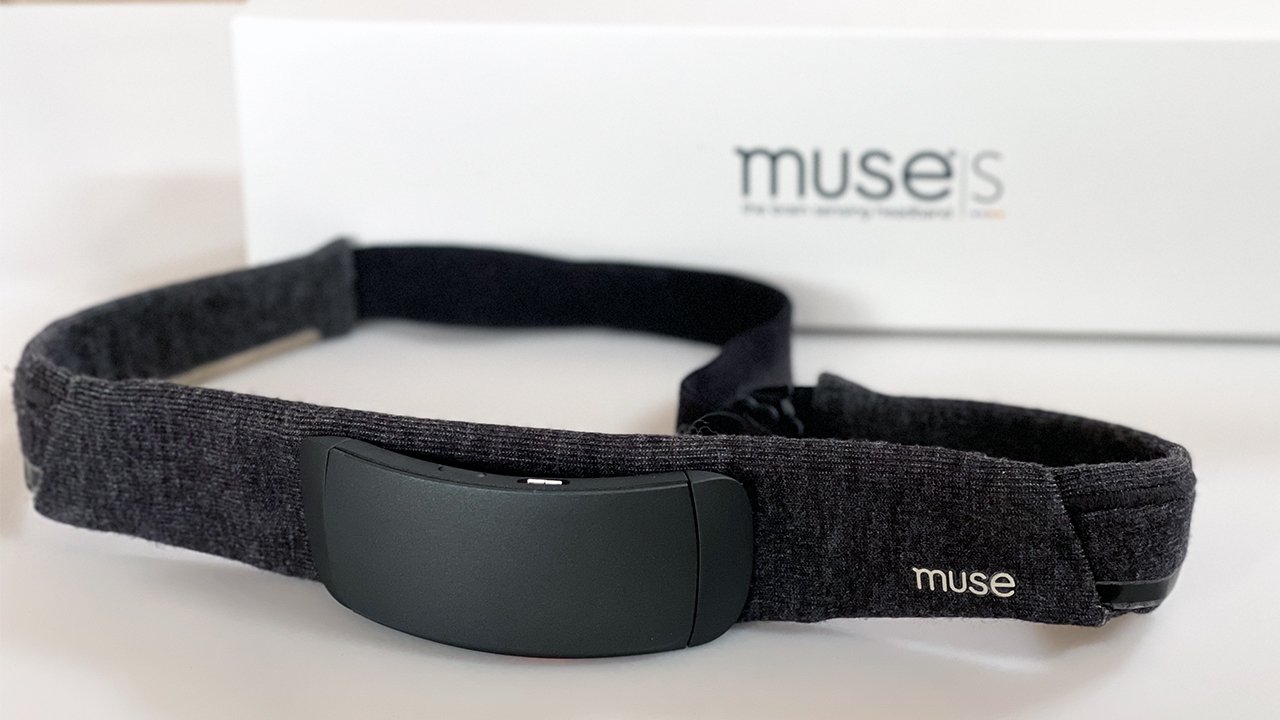
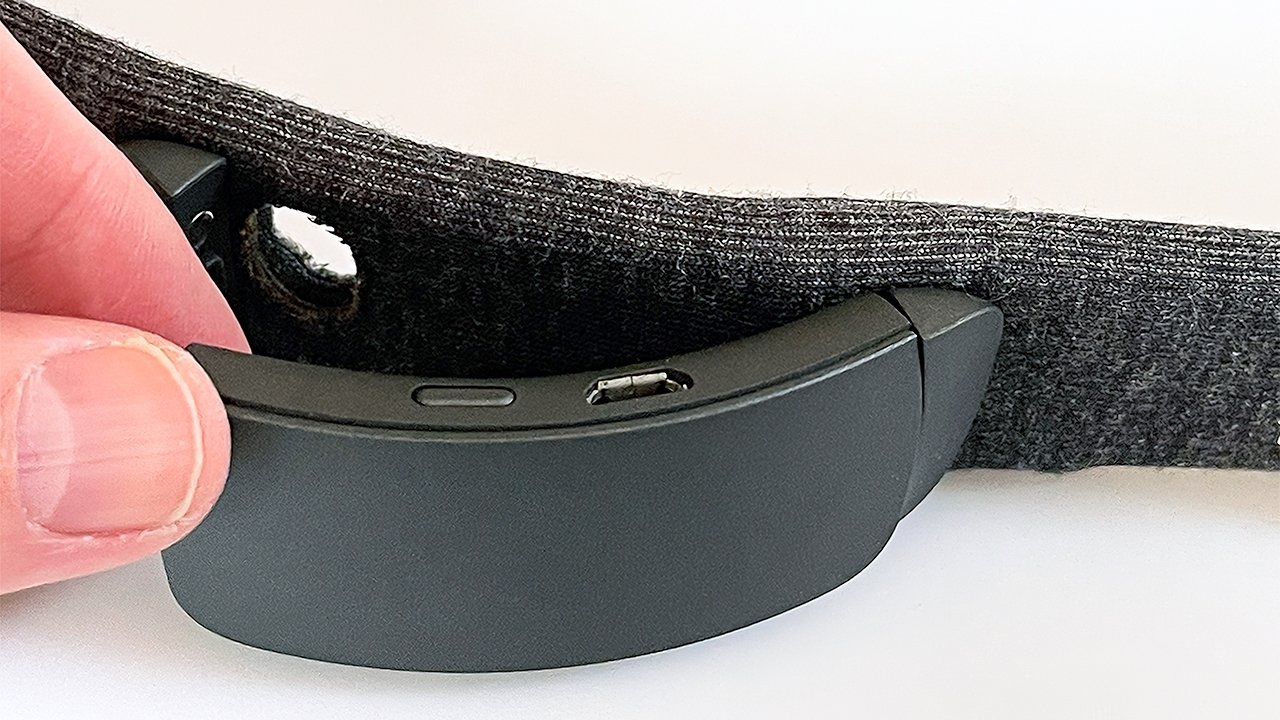

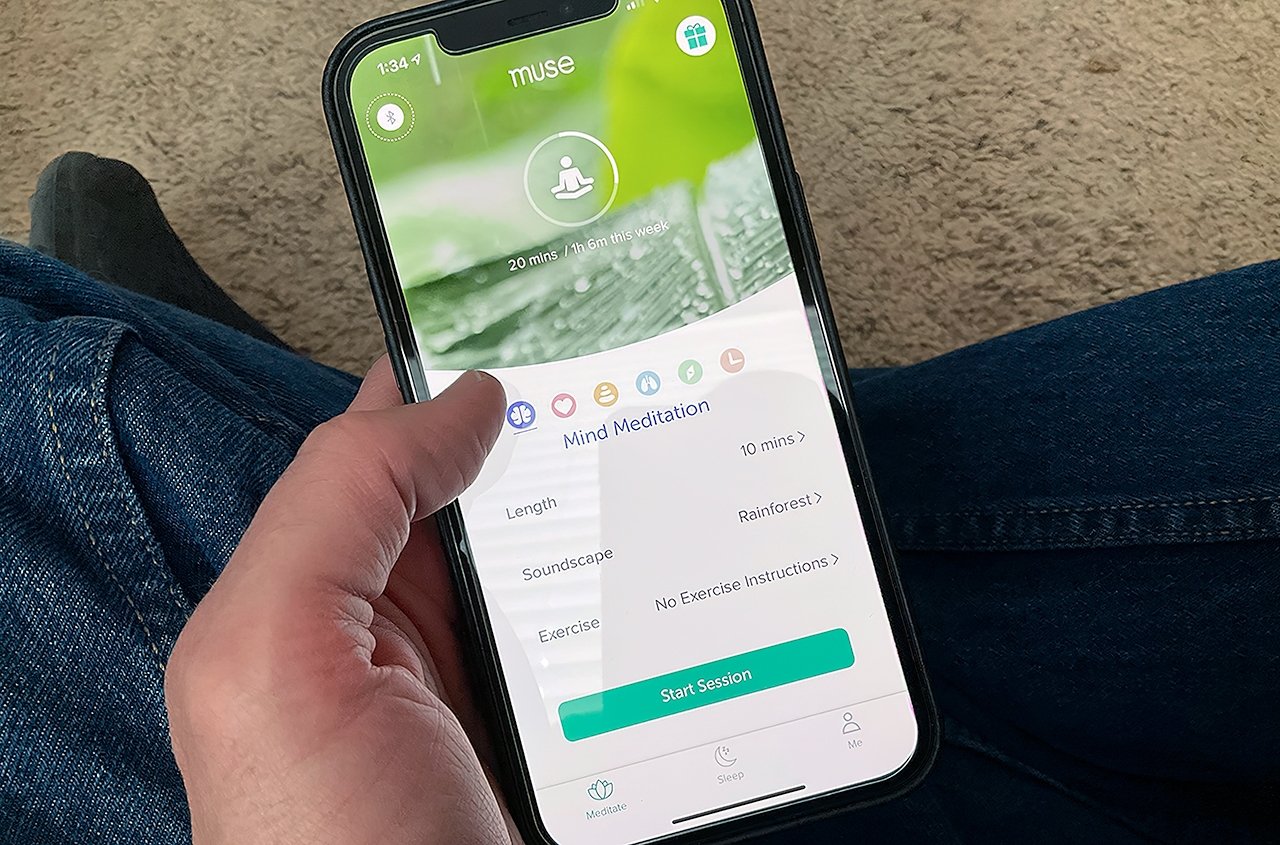
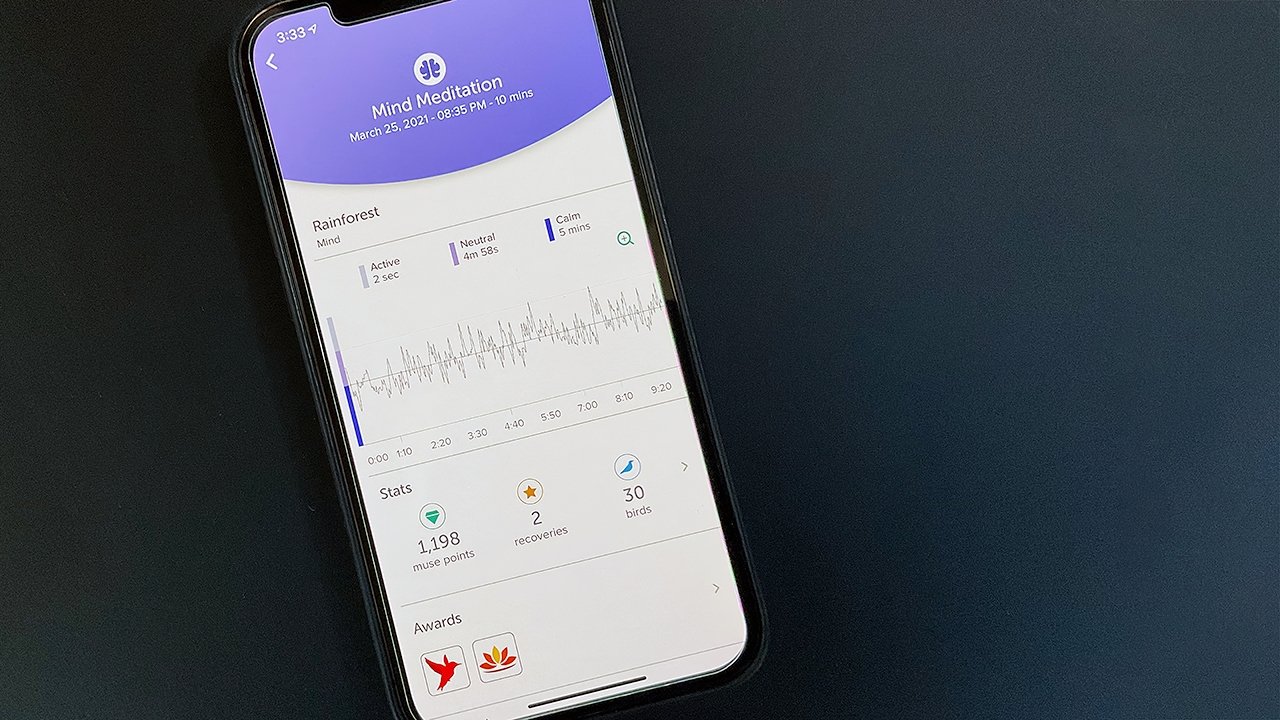








-m.jpg)






 Marko Zivkovic
Marko Zivkovic
 Malcolm Owen
Malcolm Owen


 William Gallagher
William Gallagher
 Amber Neely
Amber Neely
 Sponsored Content
Sponsored Content


-m.jpg)






6 Comments
I don’t mind the price for the device itself. But I really dislike that they try to reel you in on a subscription on top of that. And I utterly detest companies with such obvious lock-in strategies — it is so backward thinking.
If it was an open platform that followed expected standards, and with all
I like to wear my meditation coaches Hannibal Lector style. Really gets me in the moment.
Promising. Looks like this is real EEG on 4 channels. In the early days of consumer biofeedback devices there were head sensors that read muscle electrical activity (" EMG") and had the unfortunate effect of training the wearer to twitch their eye muscles to get the "relaxed" feedback signal. Not quite on a par with Navin Johnson's "Opti-Grab" but close.